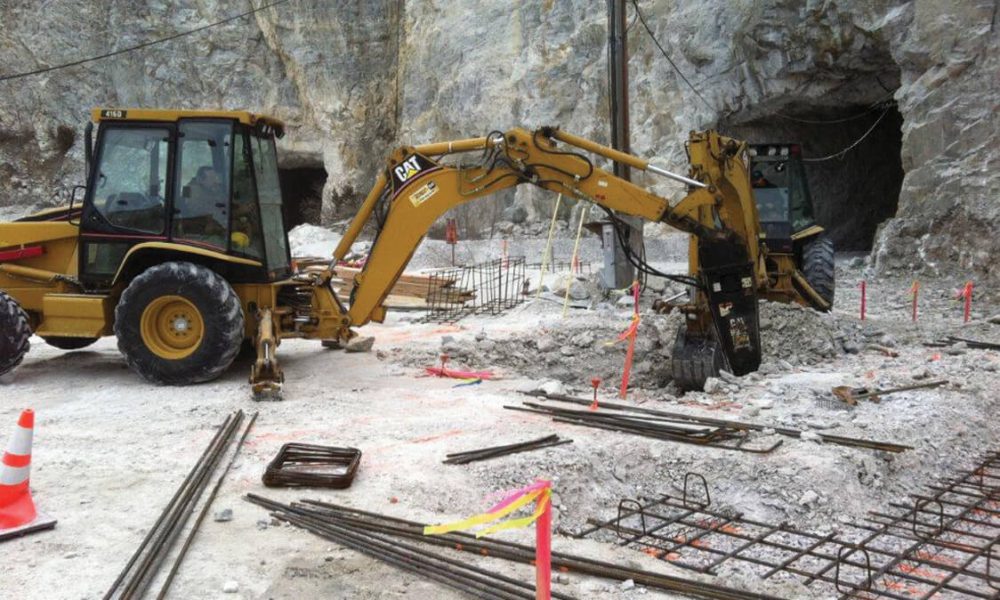Residential Excavating Ohio - Specialized Excavation for Ohio Houses
Residential Excavating Ohio - Specialized Excavation for Ohio Houses
Blog Article
Comprehensive Excavation Methods: Understanding the Basics for Success
In the realm of construction and civil design, the importance of efficient excavation methods can not be overstated. The mindful preparation, accurate execution, and precise focus to detail called for in excavation tasks require a comprehensive approach that incorporates various basic elements. From first soil analysis to the implementation of precaution and routine development monitoring, mastering these core aspects is vital for attaining success in any kind of excavation undertaking. Nevertheless, truth proficiency lies not just in recognizing these principles but in seamlessly incorporating them to navigate the complexities of excavation tasks with finesse.
Comprehending Excavation Project Planning

Effective excavation tasks are improved the foundation of meticulous and comprehensive planning. The first stage of any excavation task is the drawing board, where vital choices are made that can dramatically influence the result of the project. During this phase, it is important to collect all pertinent information regarding the website, consisting of topographical surveys, soil make-up, and any kind of potential dangers that might exist. Understanding the job budget, scope, and timeline restraints is important for producing an extensive excavation plan that ensures the job's success.
One trick facet of excavation task preparation is the advancement of an in-depth timeline that details the series of deadlines, landmarks, and tasks. This timeline functions as a roadmap for the project team, permitting them to track development and make required adjustments to ensure the project remains on routine. Furthermore, a distinct budget plan that represents all expenditures, consisting of devices leasing, labor expenses, and materials, is essential for staying clear of cost overruns and hold-ups. By carefully taking into consideration all these factors during the drawing board, excavation jobs can be executed successfully and efficiently, bring about successful end results.
Dirt Analysis and Site Analysis
Conducting detailed dirt analysis and site examination is a crucial step in the prep work stage of any type of excavation task. Soil evaluation entails identifying the make-up, structure, and residential or commercial properties of the dirt at the excavation site. This details is critical for comprehending the dirt's bearing ability, moisture material, and possibility for erosion, which are crucial factors in establishing the excavation approaches and devices required for the task.
Site analysis surpasses soil analysis and encompasses a broader assessment of the overall site problems. This analysis consists of recognizing any type of prospective risks, such as underground utilities, ecological problems, or unpredictable surface, that might impact the excavation process. By extensively reviewing the website, job managers can create reliable excavation methods that prioritize safety, performance, and ecological protection.
Utilizing innovative innovations like ground-penetrating radar, soil tasting, and drone studies can enhance the precision and effectiveness of soil evaluation and site analysis. Spending time and resources in these initial steps can inevitably save time and prevent costly hold-ups or problems during the excavation procedure.
Equipment Option and Usage
Reliable excavation jobs rely heavily on strategic tools choice and utilization to make certain ideal performance and efficiency. Picking the ideal devices for the work is vital in maximizing performance and reducing downtime. Variables such as the type of dirt, depth of excavation, and project range play a substantial function in identifying one of the most suitable equipment for the task handy.

In enhancement to choosing the proper lancaster trenching devices, appropriate usage is essential to project success. Operators should be trained to handle the tools securely and successfully - septic ohio. Normal upkeep checks and prompt repair services assist stop malfunctions and make certain regular performance throughout the job
Security Steps and Regulations Compliance
In the realm of excavation tasks, focusing on security actions and conformity with laws is critical to making certain a protected and lawfully audio functional setting. Security measures incorporate a variety of practices, consisting of carrying out extensive site analyses, executing correct signage and obstacles, and providing ample safety and security training for all employees entailed in the excavation process. Adherence to policies, such as OSHA requirements in the United States, ensures that the excavation task satisfies the needed requirements to secure employees, onlookers, and the surrounding setting.

Tracking Development and Adjusting Methods
How can predict managers properly track the improvement of excavation projects and adapt their strategies appropriately to maximize outcomes? Tracking progression is vital for ensuring that excavation jobs remain on track and meet due dates.

Verdict
Finally, understanding the fundamentals of thorough excavation methods is vital for the success of any kind of job. By comprehending task preparation, evaluating dirt and website conditions, picking suitable tools, following safety and security policies, and monitoring progression, task managers can make certain a smooth and reliable excavation procedure. Executing these methods will result in successful end results and lessen potential dangers or setbacks throughout the excavation task.
The preliminary phase of any excavation project is the preparation stage, where vital choices are made that can considerably influence the result of the project. Comprehending the project spending plan, timeline, and range restraints is vital for developing a comprehensive excavation plan that makes sure the task's success.
Just how can predict supervisors effectively track the improvement of excavation jobs and adjust their approaches as necessary to maximize end results? By closely keeping track of development and being prepared to adapt methods, project supervisors can boost the general success of excavation jobs.
By comprehending job preparation, examining dirt and website problems, choosing proper tools, abiding with safety and security laws, and monitoring progress, project supervisors can make certain a reliable and smooth excavation procedure.
Report this page